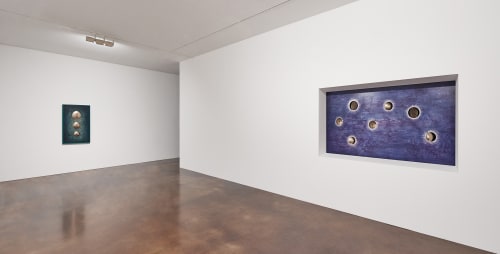By Tiffany Yeon Chae
As an art critic in the 1990s, Park Chan-kyong would often refer to what he called the ‘colonial unheimlich’, a theory that is key to understanding his visual work. He claims that there is a serious rupture between Korea’s past and its present: a kind of collective amnesia effected by the country’s rapid economic development, which has made even the recent past an unfamiliar, almost ghostly, figure. ‘Farewell’, the artist’s solo exhibition at Kukje Gallery, characterizes this ghostly past as a spirit to be exorcised by means of a gut, a traditional Muist (Shamanic) rite that has largely been neglected in con- temporary Korean society.
The victims of various historical and more recent tragedies in Korea appear together in the three-channel video Citizen’s Forest (2016), which is the show’s centrepiece. The film features several figures in the straw hats that condemned crim- inals were made to wear in the late 19th century. Amongst the trees, men with skulls for heads play trumpets: an image borrowed from Oh Yoon’s incomplete painting The Lemures (1984), which portrays the victims of the 1980 Gwangju Massacre. Teenage girls standing next to a boat in school uniforms seem to be the victims from the Sewol ferry disaster in 2014. A dog barks throughout, spooked. We also hear a funeral song sung by elderly men from Jindo and the sounds of gut performed by elderly women from Jeju Island. The ghosts find the solace needed to rest in peace and then leave one by one, as though bidding farewell to their tragic pasts...






